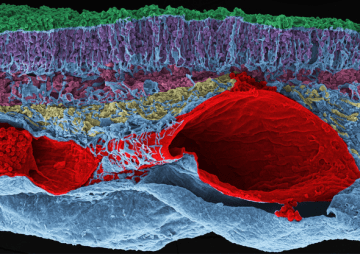Kwon and Tormes in Scientific American:
 In 1968 an exhibit entitled Cybernetic Serendipity: The Computer and the Arts was held at the Institute of Contemporary Arts in London. The first major event of its kind, Cybernetic Serendipity’s aim was to “present an area of activity which manifests artists’ involvement with science, and the scientists’ involvement with the arts,” wrote British art critic Jasia Reichardt, who curated the exhibit. Even though it was an art show, “most of the participants in the exhibition were scientists,” Reichardt said in a 2014 video. “Artists didn’t have computers in the 1960s.” A lot has changed since then, however. Computers, no longer the commodity of a select few, help artists to deviate from more traditional mediums.
In 1968 an exhibit entitled Cybernetic Serendipity: The Computer and the Arts was held at the Institute of Contemporary Arts in London. The first major event of its kind, Cybernetic Serendipity’s aim was to “present an area of activity which manifests artists’ involvement with science, and the scientists’ involvement with the arts,” wrote British art critic Jasia Reichardt, who curated the exhibit. Even though it was an art show, “most of the participants in the exhibition were scientists,” Reichardt said in a 2014 video. “Artists didn’t have computers in the 1960s.” A lot has changed since then, however. Computers, no longer the commodity of a select few, help artists to deviate from more traditional mediums.
The changes since the 1960s are well-reflected in the entries for the 2020 Art of Neuroscience competition, held by the Netherlands Institute for Neuroscience. Now marking its 10th year, the contest features some highly technological pieces and others grounded in classical methods, such as drawing with pen on paper. The winning entries were created by independent artists, as well as working scientists, demonstrating that art and neuroscience can inspire both professions. A winner and four honorable mentions were selected from dozens of submitted works. And seven pieces were chosen by Scientific American as Editors’ Picks. (Photography editor Liz Tormes served on the panel of judges for the competition.)
More here.
